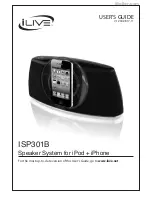
5. Speaker Cable
Don’t compromise your sound quality by using thin, inexpensive speaker wire. We
recommend using high quality oxygen free copper two-conductor speaker cable.
For low-impedance applications (8 ohm) and runs less than 50 feet we recommend
16-gauge cable, and for longer runs we recommend 14 gauge or larger cable. (Wire
size is less important for 70-volt distributed audio applications but still may affect
performance.) Note that most municipalities require the use of CL2 rated speaker
cable for cable runs through walls and ceilings. Leave enough excess speaker cable
so you can stand comfortably on the floor or ladder while connecting the speaker
cable to the speakers. If mounting the speakers outdoors, you may wish to fill the
hole that the speaker wire passes through with a caulking material to prevent water
intrusion and air infiltration.
6. Speaker Connection
Remove about 4" of the cable jacket to expose the inner conductors. Strip ¼" of
insulation from each conductor. Remove the small plastic end cap from the back of
the speaker to expose the speaker wire connector. Remove the green speaker wire
connector and insert the speaker wire, observing speaker polarity. Using a small flat
head screw driver tighten the screws to secure the speaker wire. Plug the connector
back into the speaker and replace end cap.
4


























